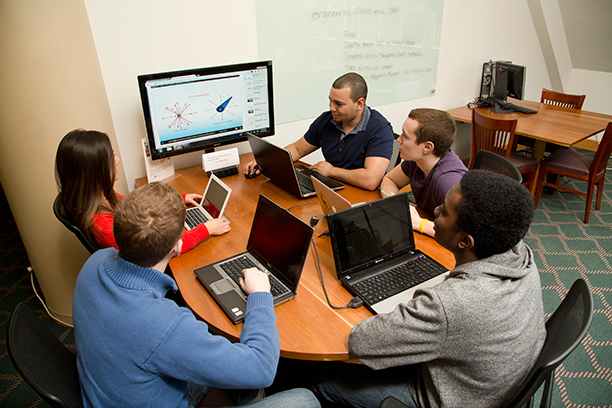Develop infrastructure to create and support online and innovative learning
To enable the campus to be a leader within online education and be at the forefront of implementing innovative learning strategies, key infrastructure and support requirements must be satisfied, as outlined by the following initiatives:
- Create collaboration environments to assist faculty and students
- Streamline registering for courses in a variety of modalities and combining different kinds of learning experiences in the context of an overall degree program
- Develop and deploy the IT infrastructure needed to incorporate 21st century instructional technologies into learning spaces
- Create a new physical space on campus for faculty and staff that provides hands-on support for exploring how best to use innovative technology to enhance teaching and learning
- Create and support instructional tools that enable a full range of pedagogical approaches and flexibility in responding to students’ needs
- Provide content creation, delivery services and infrastructure for new and evolving instructional systems
- Incorporate principles of universal design in the creation of online instructional content and online to create optimal learning environments to ensure equal access
- Develop a common set of terminology and messaging about the online/blended experiences at Illinois
- Establish a campus level system for cataloging, storing and reusing multimedia elements for teaching and Public Affairs
- Establish a consistent and predictable revenue model that can return resources to units to incentivize and support innovation
- Use student expertise/insights to develop IT services for student and others’ use
- Create a framework and process to manage student-developed IT services
Metrics
- Percentage of students taking online, blended, or flipped courses
- Percentage of classrooms with technology
- Percentage of instructional units that are from online, blended, or flipped courses
- Number of instructional units from online courses from non-residential students
- Number of instructional units delivered via MOOCs
- Enrollment within courses aimed at building an understanding of digital technologies integrated with disciplinary and professional development
- Percentage of projects that meaningfully include universal design principles as an item on the project plan
- Number of learning spaces with mobile connectivity sufficient to meet learning needs
- Percentage of faculty teaching an online, blended, or flipped course
- Revenue generated from online courses

